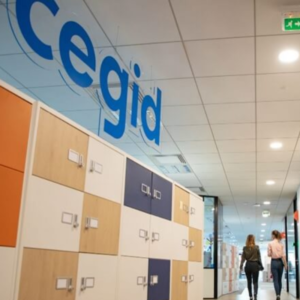In the light of the current digital setting, the labour market is becoming more complex with more job offers emerging to meet the new demands of the changing environment.
Moreover, according to a recent study by Equifax on the labour market, about 40% of new hires decide to change jobs in the first six months. For this kind of scenario, the second phase of Inbound Talent, the new methodology applied to the HR field, becomes particularly relevant as its main objective is to align the new hire’s needs with the organization, reduce the risk of leaving in the first few months, and increase their productivity in the shortest time possible.
To implement this second phase called “Inbound Conversion“, two key aspects must be taken into account. First is to define an implementation methodology, which will provide us with the necessary framework for creating a personalized plan according to each employee’s needs and expectations. Second is to create a personalized action plan based on the information gathered during the attraction phase, which is the first phase of Inbound Talent.
Six recommendations for your new employees to reach their maximum potential
To fast track the comprehensive onboarding processes so new hires achieve maximum levels of productivity, we make 6 recommendations that we can build into our individualized conversion plan.
1.- Set up an onboarding process focused on the business. Organizations that base their onboarding processes on a well-defined strategy aligned with business objectives will be able to make sure that their professionals establish ties enabling them to work smoothly within the company and to be more productive. Using specialized technology solutions brings in the necessary mechanisms for successfully assimilating new employees into the company, by favouring communication between hiring and recruiting managers and line managers.
2º.- Promote interpersonal relation for creating pleasant work environments, by setting up more transparent levels of communication, through which productivity levels increase in the long term. To achieve this goal, mentoring and networking are two simple actions that can deliver quick results.
3º.- Implement continuous performance appraisal processes. It is advisable to ensure review results are not being conditioned only by the most recent actions and work done, and to amplify the performance review process to go right back to the first day the employee joins the company. This way we can analyse the employee’s ability to evolve and learn during the period for which we are calculating the appraisal.
4º.- Maintain permanent contact with the new employee. Losing a key professional can directly affect our profit and loss account. So, it’s essential to set down three communication premises that allow us to perpetually follow up the employee by communicating continuously, quickly and through different channels.
5º.- Promote transparency in the organization. Employees who are informed and understand the role they play in the company’s mission and overall objectives are more likely to trust the organization. So, an open and transparent communication policy for all employees will increase their engagement levels.
6º.- Detect potential in professionals. During the conversion phase, it is also possible to do a performance review and gain feedback from follow-up meetings. All this information helps us to detect the employee’s growth potential in the company. This deserves special attention, when considering their engagement in the third phase of Inbound Talent, where we analyse talent in the organization using a potential matrix.
How do we know if we have been successful?
To check if we have been successful in the conversion process, we set key indicators such as shorter time to productivity from onboarding for the newcomer, improved newcomer impact on business performance, increased permanence of new employees, higher engagement levels, available information on the company’s work climate, or knowledge of new employee expectations.
Additionally, we must not overlook how important it is to have a system that supports us for adding all the information, while enabling HR to implement actions to take advantage of the opportunities or to correct deviations from the action plan.
If you found our post interesting, access our e-book: Inbound Conversion: 6 steps for your new employees to reach their maximum potential
{{cta(‘6ac61358-f8b1-4ffe-8d5c-f801a0f2c97c’,’justifycenter’)}}






